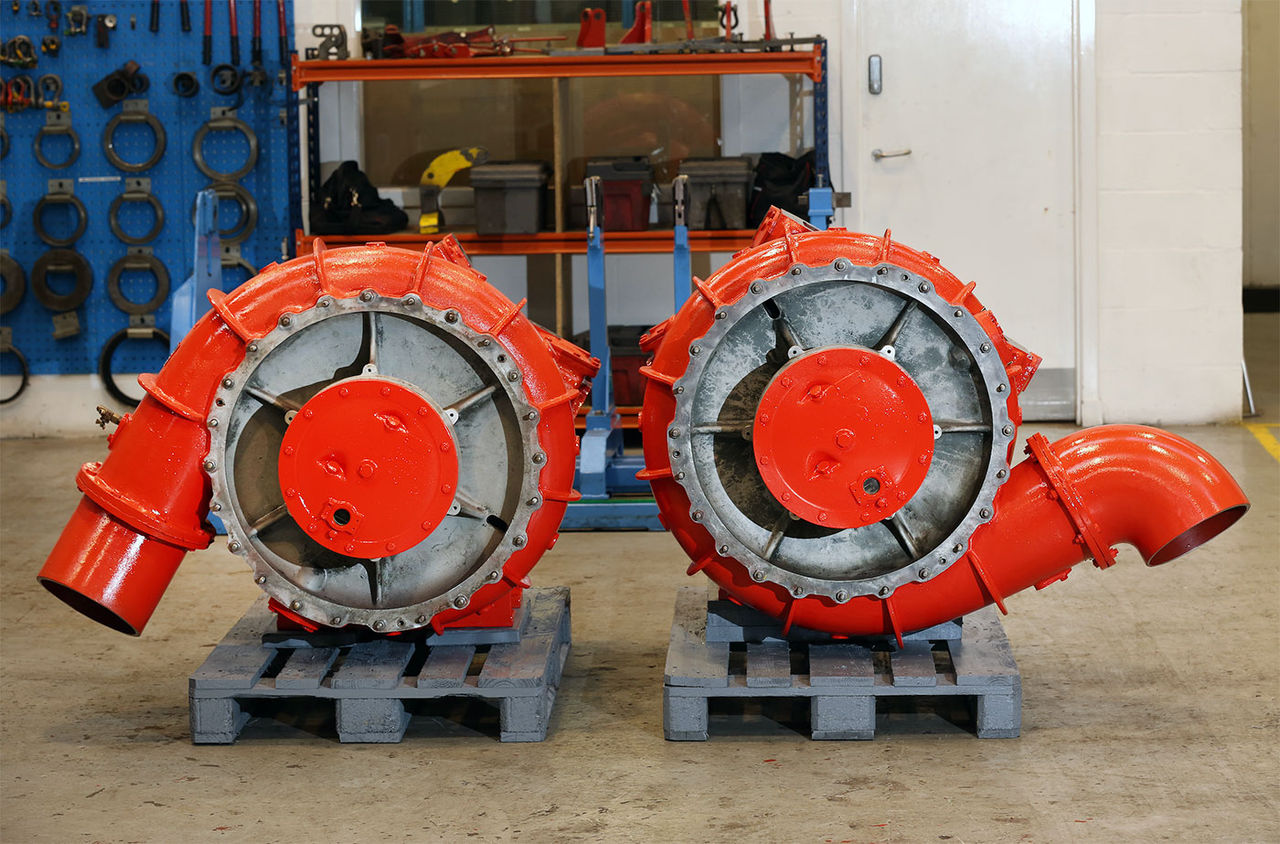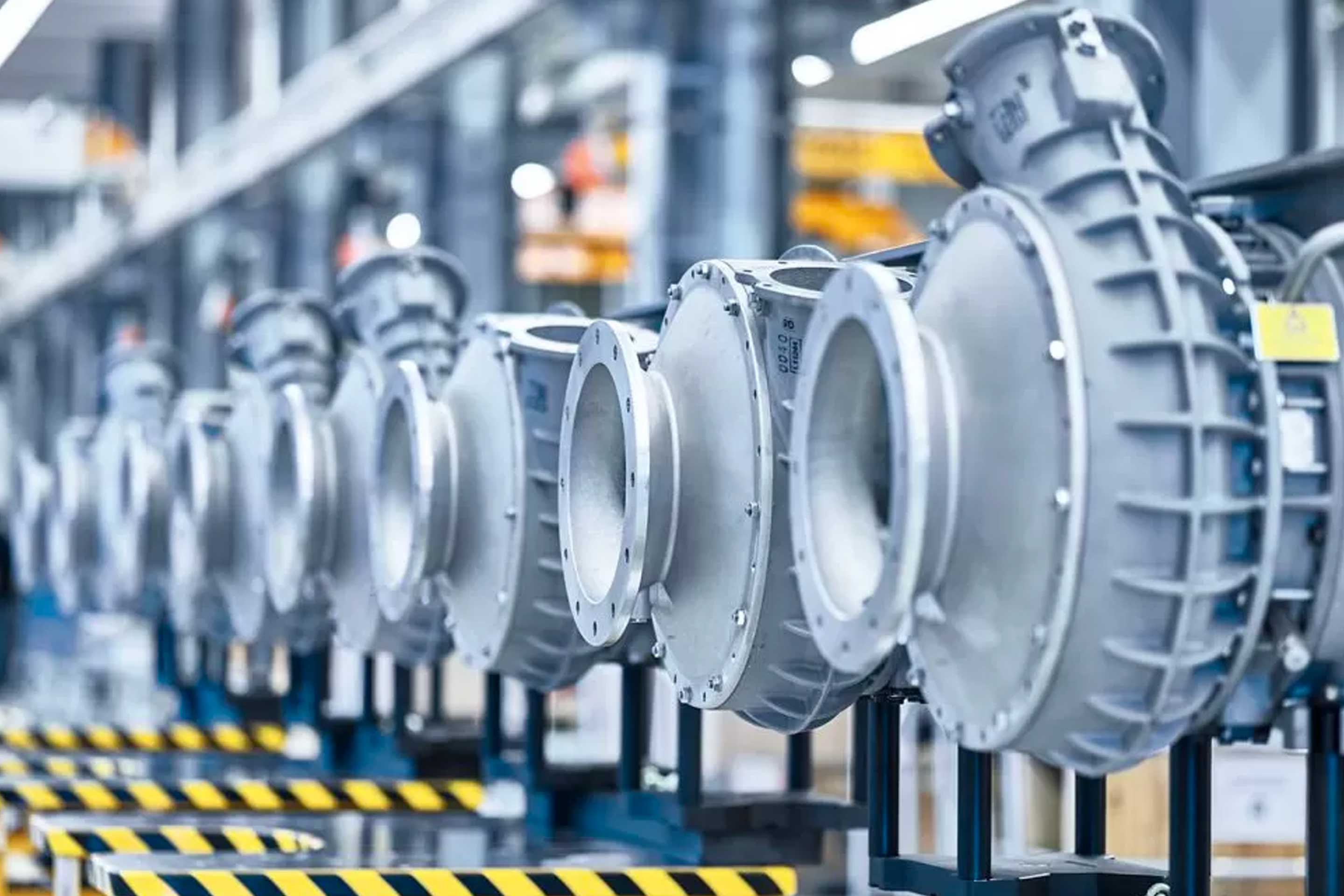In the previous installment of our look back through the history of the internal combustion engine, we took a look at how inventors and engineers at the beginning of the last century were turning towards forced induction for greater efficiencies.
We left the story as a young Alfred Büchi was making a name for himself as a supercharging expert at Sulzer Winterthur in Switzerland. Now it’s time to complete the timeline, filling in the dots between turbocharging’s creation and the products you’re surrounded by on a daily basis today.
While Büchi was settling in at Sulzer, 50km away in Baden, Brown, Boveri & Cie – BBC was also making a name for itself. BBC was originally founded in Zurich, Switzerland, in 1891 by Charles Eugene Lancelot Brown and Walter Boveri. Originally an electrical engineering company, BBC would embark upon a new venture around 1900 that was more related to thermodynamics…
BBC worked on the construction of the first continental European steam turbine, consolidating strong skills in turbomachinery. During the same period, another big engineer associated with early turbocharging began collaborating with BBC on gas turbines: Auguste Rateau. Later, Alfred Büchi and others would recognize Rateau as being the first to build and test (on an aircraft) a real turbocharger, bringing in parallel a better understanding of turbocharging theory.
At a similar time, Sanford Moss also tested turbocharged aircraft for General Electric in the US, and is credited with being the first to have built turbochargers on a regular basis. He is also recognized as the inventor of the first turbocharger control device: the waste-gate (a bypass valve that allows a fraction of the exhaust gases to bypass the turbine in a way that controls the turbocharger power and boost pressure).
Meanwhile, Sulzer had already become a specialist in the world of Diesel engines, and BBC was building an impressive reputation around turbomachinery, both of which would enable Büchi to go further.
In 1915 and 1919, Alfred Büchi contacted Brown Boveri in Baden for a partnership. The proposal from Büchi was considered but declined on grounds that “the project as a whole is undesirable and uneconomical”. Whatever the reasons for this conclusion, advocates of turbocharging did exist at BBC and it would not be long before they were making a strong case for its development; this could be considered as the historical starting point of ABB Turbocharging.
The first concretization of this preliminary phase was the design and construction of the first turbocharger for large Diesel engines, named ‘VT402’ and created for use at Schweizerische Lokomotiv und Maschinenfabrik (Swiss Locomotive and Machine Works) (SLM), a locomotive manufacturer also located at Winterthur.

The Büchi Syndicate: Turbocharging for Diesel engines
The ‘Pulse system’ invented by Büchi is perfectly adapted for the low-pressure turbocharging systems (less than 1.5 bar absolute) of the time. This was the reason why the ‘main patent’ triggered a breakthrough in 1925, allowing turbocharging to take-off within a short space of time all over the world.
Following this, a new company, known as the ‘Büchi Syndicate’, was set up for the purpose of creating the ‘compound combustion engine with an exhaust gas turbine and a supercharger pump’.
The contract mentioned:
- Alfred Büchi in charge or engineering and customer relations
- BBC in charge of building the turbochargers
- SLM was to provide the Diesel engine for the tests
After 1925, turbocharging followed a far more linear timeline up to the present day:
- Boost pressure from the 1.35 bar absolute at the beginning up to 15 bar, and even more in some extreme cases
- Output power of a given engine multiplied by up to 5-6 times in comparison to its ‘naturally aspirated’ version
- Substantial fuel and CO2 reduction by up to 70%
- Altitude operation of aircrafts highly increased
- Turbochargers air capacity range from 50g/s 50kg/s – the largest turbo on the market is 1,000 times larger than the smallest!
- 1, 2, even 3-stage turbocharging
- Aftercooling and Intercooling to further increase the intake density and engine efficiency by reducing compression temperature
- Sophisticated pulse systems and convertors
- Variable turbine geometry
- “Hyperbar” system – a smart hybrid system between Diesel engine and gas turbine, with a combustion chamber parallel to the engine for dynamic acceleration (J. Melchior).
- Electric turbocharger…
The Comprex
During the 1970-80, BBC developed in Baden an interesting alternative to the turbocharger, combining the advantages of a driven compressor, bringing boost pressure as soon as the engine is in operation, and the turbocharger, able to recover energy from exhaust. The principle is based on the utilization of pressure waves from exhaust, in a way to force fresh air going toward the cylinders, a little bit following idea of the Newton’s cradle…
Making engines ever-more efficient
Even if turbocharging is the main invention which enables the combustion engine to continue to be competitive, we’ve seen plenty of other innovations alongside.
Constant progress has been made on material quality and design, enabling higher and higher engine speed and pressures, or better specific performance. Injection systems, sparking and combustion layout have also brought a considerable improvement in terms of performance, efficiency and emissions, through faster but better controlled combustion process for Diesel, and knock margin for spark-ignited. High-pressure common rail technology laid the foundations for automotive ultra-high-speed Diesel engines to switch from indirect to direct injection, with efficiencies up to 40% and power density above 100 hp/liter. Medium speed spark-ignited ‘ultra-lean burn’ gas engines are now competing with Diesel units in terms of efficiency, also reaching an incredible 50%.
An increased knowledge in thermodynamics and associated improvements have also contributed to make the engine even better throughout the twentieth century. This is particularly the case with the Miller cycle invented in 1947 in US by Ralph Miller, originally for improving efficiency by extending the expansion stroke, but afterward, combined with high pressure turbocharging to reduce the NOx emissions (something that’s particularly relevant today), thanks to better combustion temperature management. Variable valve lifts and scavenging improvement for large low-speed two-stroke engines are also non neglectable players within the frame of these improvements.
Other avenues were also explored during the 20th century, including the rotary engine from Felix Wankel, presenting certain advantages such as fewer vibrations during operation. This could prove ideal as an electric vehicle range extender, and is also better suited to operation with hydrogen than piston engines.
Chemical engineers from the petrol industry worked tirelessly in parallel to develop gasolines providing higher compression ratios without knocking, and a drastic reduction of particulate matter for Diesel which, for example, reduces the sulfur rate from several percent’s down to several ppm.
Last but not least, in synchronization with the regulation authorities, exhaust after treatment has also been developed, mainly since the 1980’s. This includes the oxidation catalyst, followed by the Diesel particulate filter (after a first trial by Mercedes-Benz in 1985, this system entered in production on the Peugeot 607 in 2000) and at the end, the NOx after-treatment systems, mainly SCR (Selective Catalytic Reduction). Since 1992, automotive Diesel engines NOx and particulate matters are respectively reduced by 90 and 96%.
Internal combustion engines are finally entering the digital era, learning or relearning the need to burn decarbonized fuels like ammonia or hydrogen directly (remember, de Rivaz began with hydrogen in early 1800’s and Lenoir followed in 1860). While internal combustion engines remain the only viable solution for deep sea shipping in the foreseeable future, the world is changing when it comes to smaller powertrains, and shorter-distance marine applications are just one area we’re seeing internal combustion engines joined with intelligent hybrid systems and competing with (or more exactly completing) other upcoming attractive technologies including fuel cells, with their maturity providing a major advantage along with their capability to share the same fuels.














